The ideal compact camera combines the portability of a smartphone with the superior imaging capabilities of a mirrorless or DSLR system camera. Compact cameras were once considered to be inexpensive, disposable items, but makers have recently had to work much harder to compete with the handy phone cameras that everyone now carries around.
Therefore, the best compact cameras offer features that a smartphone cannot physically provide, such as a larger imaging sensor and a lens with high-end, sophisticated optics. A tiny camera’s wide aperture also enables the employment of creative effects like narrow depth of field to blur the backdrop of an image. With a compact camera, you can get images with more sharpness, quality, and dynamic range than you would with a phone. The popularity of retro compact cameras like the Fujifilm X100V on the internet recently is due to the fact that they offer an imaging experience that a phone camera just can’t quite match.
Based on current costs and the results of our comprehensive testing, we’ve selected the tiny cameras that we believe offer the best value for the money at this time. In this article, there are both affordable and expensive options for cameras. Instead of large superzoom versions, we’ve concentrated on smaller compact cameras made for travel; if that’s what you’re looking for, check out our guide to the best ultra zoom cameras.
How to Choose Best Compact Digital Camera for Professional Photographers
Don’t worry if technical terminology aren’t your thing. This buying guide has been kept straightforward with language that anyone can understand. If you want to examine how different photographs compare pixel by pixel, check out our camera reviews instead of this tutorial. Nevertheless, it is important to consider a few important specifications when choosing your compact camera, so we’ve listed them below in the simplest form.
Your image’s final appearance will be significantly influenced by the sensor’s size and resolution. There are typically three sizes of sensors used with compacts. They are 1/2.3-inch, 1-inch, and APS-C in order of size. Since a larger sensor allows for more tonality and dynamic range, it generally produces images of higher quality. However, they are more expensive and need bigger cameras to house. The amount of detail in an image is measured in megapixels (MP), or pixels. increased megapixels provide for improved print quality, but they can also result in increased image noise, which degrades low light quality.
Of course, the lens is the other component of a tiny camera. You can zoom in and out depending on the focus range. Naturally, big zooms will give you more flexibility, but the optical quality usually suffers as a result. In fact, some compacts, like the amazing X100V from Fujifilm, are fitted with high-quality prime lenses and have no zoom at all. These result in beautiful pictures, but you have to move your feet to get close to a subject.
It’s important to take into account additional characteristics. Wish to capture quick action? Identify the maximum frame rate that the camera can achieve. Do you anticipate working in dim lighting? Your best bet is to use a higher ISO range. Check the video resolution and frame rate if you want to record video in addition to still images. There is more to cover, but the best way to understand it is to browse the amazing small cameras that are
Best compact for action: Sony Cyber-shot RX100 VII
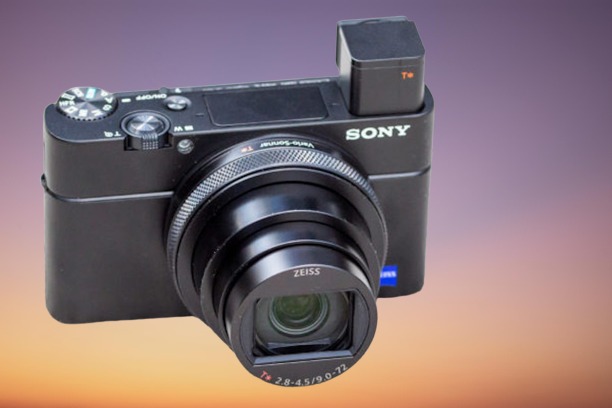
- 20MP Exmor RS CMOS sensor
- 24-200mm equivalent f/2.8-4.5 lens
- 20fps shooting
- 4K video recording
The Sony RX100 VII is the best option for portability and overall image quality. The one-inch sensor was first used in Sony’s RX100 series, which is the model that other cameras have tended to imitate. The technology packed into this tiny wonder, which is now in its sixth iteration since the invention of the camera, is rather amazing.
You receive a 24-200mm (35mm equivalent) lens with an f/2.8-f/4.5 maximum aperture in addition to the one-inch sensor. You can shoot at 24 frames per second, which is quite amazing for a pocket camera. You might use this camera to capture sports and action because it has a strong autofocus system.
Other interesting features include a tilting LCD touchscreen, built-in wi-fi, and 4K video. Additionally, the camera comes with an electronic viewfinder that emerges from a corner.
So what is the disadvantage? The price, that is. To acquire all of these capabilities in such a small package, you have to spend big dollar, and the RX100 VII is presently available for purchase for about £1,000. Although that is a hefty price to pay for a compact camera, you do get some seriously impressive equipment. Look at some of the older RX100 models if you don’t have access to those kinds of ready-mades; we’ve listed one possibility later in this tutorial.
Best all-rounder: Panasonic Lumix TZ100 / ZS100
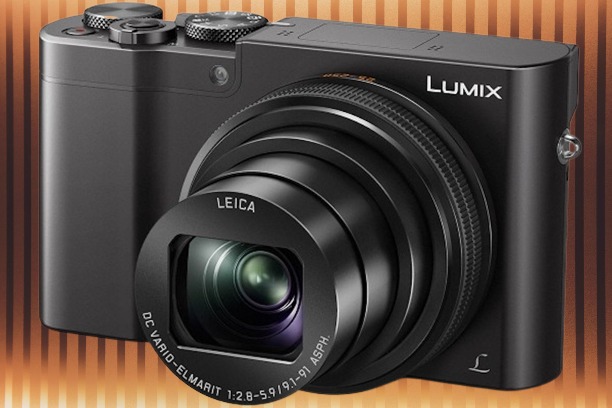
- 20.1MP image sensor
- 10x optical zoom lens, 25-250mm equivalent
- 4K video
- 5-axis image stabilisation
- 3-inch, rear LCD screen
Compact cameras with big (one-inch) sensors typically have a limited zoom. But with its 10x optical zoom capability, Panasonic’s TZ100 bridges the gap between high-end compacts and superzooms.
The 25-250mm equivalent should be more than sufficient for the majority of circumstances, even though 10x doesn’t reach the lofty heights of the 30x or 40x zooms elsewhere on this list. A comprehensive number of features is available in addition to this, including an electronic viewfinder, built-in WiFi, 4K video recording, and 10 frames per second filming.
Despite having a 1.16 million-dot resolution and a relatively small electronic viewfinder, the 3-inch rear LCD with touch sensitivity makes handling the camera easier. Although the fixed screen makes it difficult to compose from awkward angles, it may have helped to reduce the camera’s overall size.
The price isn’t excessively exorbitant, and you get a little bit of everything for your money with this camera, which is generally very appealing and arguably the finest compromise of all the cameras we’ve reviewed. Although it won’t match your DSLR, the camera’s image quality is excellent, and its portability makes it an especially attractive choice for a travel camera.
Best value compact: Panasonic Lumix LX15 / LX10

- 20MP, 1-inch sensor
- 24-72mm equivalent, f/1.4-2.8 lens
- ISO range: 100-12,800 (extendable to ISO 25,600)10fps shooting
- 5-axis hybrid image stabilisation
The Panasonic LX15/LX10 is a compact camera with a one-inch sensor and a 24-72mm equivalent focal length range that is directly targeted at users of the Sony RX100. It improves slightly over the RX100 V by having a maximum aperture of f/1.4 at its widest angle and a still-very-usable f/2.8 at the zoom’s extreme end.
Instead of being fixed like the TZ100’s screen, the LX15’s screen is hinged, allowing you to tilt it to face forward for selfies and other oddly positioned photos.
Since this is Panasonic, the LX15 comes with 4K video and 4K photo modes, both of which appeal to a wide range of people. However, there is a significant drawback here, particularly for enthusiasts: there is no viewfinder.
Another very attractive Panasonic compact camera that captures excellent photographs at a quarter of the cost of the Sony RX100 VII is the LX15. If you don’t want to spend a lot of money, this can be the better option depending on what you need from a camera.
Best for YouTube and streaming: Canon PowerShot G7 X Mark III
- 20.1MP, 1-inch CMOS sensor
- 24-100mm equivalent, f/1.8-2.8 lens
- ISO range: 125-12,800
- Screen: 3-inch 180-degree tilting touchscreen, 1.04 million dots LCD
- 20fps burst shooting (8.3fps with AF)
among its high-quality 1-inch sensor and 24-100mm equivalent lens, Canon’s PowerShot G7 X Mark II was a surprise favourite among YouTubers. It offers everything needed in a convenient package. A 3.5mm microphone jack, uncropped 4K UHD video, and the option to livestream directly to YouTube were added to the Mark III version, which essentially offered the same basic camera.
The absence of a viewfinder may turn away photographers; it has less of an impact on vloggers and YouTubers. Selfies and self-taping are made more easier by the 180-degree LCD screen tilt, and the camera is also much more pleasant to carry than its thin proportions might suggest thanks to the well-defined grip. The G7 X Mark III seems upscale thanks to the ergonomic metal control ring that surrounds the lens.
Although the G7 X Mark III is primarily a vlogging camera, it is not without excellent image quality in both still and moving images. The G7 X Mark III might be the right camera for you if you’re a hybrid content creator looking for a portable device that can do a little bit of everything.
Best premium travel compact: Sony Cyber-shot RX100 VI
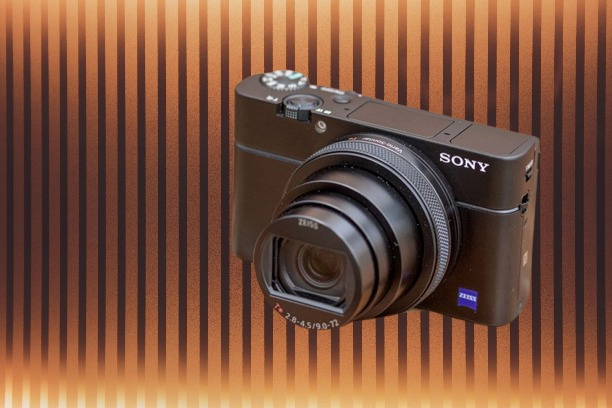
Do you know?
The Sony Cyber-shot RX100 VI is cheaper than the Mark VII, but still delivers a premium shooting experience
- 20MP 1inch BSI CMOS sensor
- 24-200mm equivalent, f/2.8-4.5 lens
- Pop-up electronic viewfinder
- 24fps shooting
- 4K video recording
Why not think about the Sony Cyber-shot RX100 VIII’s predecessor if you liked the way it looked but felt that it was a little out of your price range? With a 20MP 1-inch sensor and a 24-200mm equivalent zoom lens, the Sony Cyber-shot RX100 VI is a very capable little pocketable compact that offers almost the same shooting essentials as the Mark VII. This combination gives you a versatile little shooter that’s perfect for travel.
The RX100 VI consistently captures sharp photos over the course of its whole zoom range, and the quick autofocus system makes it easier for the user to maintain a high hit rate. While you could tinker with the settings if you wanted to, you’ll probably have a better time if you stay out of the camera’s way because it’s a fiddly device to use and the automated exposure system is excellent.
Although it may seem strange to say this about a camera that costs close to £1000/$1000, the RX100 VI really does produce exquisite images. For people who like to be more hands-on throughout the shooting process, you’re definitely better off with something like the Fujifilm X100V, which is discussed further on in this article. It’s just not a very tactile experience.
Best Compact Camera for Travel:
Panasonic Lumix TZ90 / ZS70
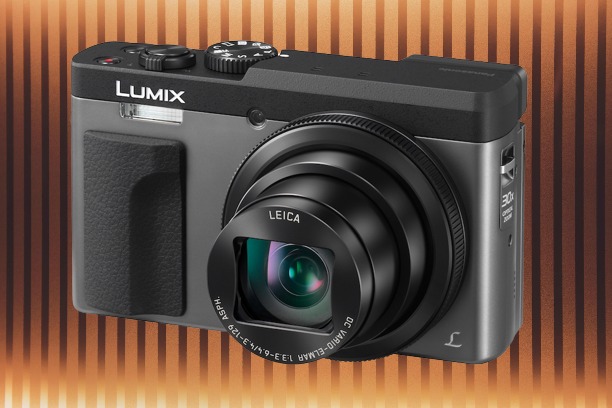
- 20.3MP, 1/2.3-inch size sensor
- 24-720mm equivalent lens, 30x optical zoom
- 3-inch, 1040k-dot touch-sensitive LCD screen, tilts 180 degrees
- 0.2-inch, 1,166k-dot viewfinder, 100% field of view, 0.46x magnification
- 4K video recording (can get 30fps stills)
The travel zoom compact from Panasonic builds on the accomplishments of all that came before it. It has a 30x optical zoom, but you must accept a smaller sensor than its one-inch companion, the TZ100, in exchange for that wide zoom range.
This superzoom compact continues to rank well in terms of features. Along with the enormous zoom, the camera also features a small built-in viewfinder, 4K video recording, a touch-sensitive screen, manual controls, raw format shooting, and a body that almost fits in your pocket.
It’s a fantastic option for travellers, although it struggles in low light compared to competitors with larger sensors. You shouldn’t worry too much about it if you plan to use it mostly during your sunny vacations.
The Panasonic Lumix TZ90 was replaced by the TZ95, which added Bluetooth and a slightly larger EVF, but the TZ90 is still very affordable.
Best compact Camera for vlogging: Sony ZV-1

- 20.1MP 1-inch BSI CMOS sensor
- 25-70mm equivalent lens, f/1.8-2.8
- ISO range: 125-12,800 (extendable to ISO 64)3-inch, fully articulated touchscreen
- 4K video recording (25fps)
The Sony ZV-1 was created particularly to be a superior tiny camera for vlogging and filming videos, and it delivers the goods with a 1-inch sensor, a high-quality lens, and several video-friendly features.
It has a ‘Product Showcase’ mode, a Background Defocus option, and 4K video features that are designed to make vlogging even simpler. The screen can be rotated around for vlogging and selfies, and there is a multi-direction microphone on top with a “deadcat” to cut down on wind noise.
If there’s one feature that might entice professional photographers to try the ZV-1, it’s the uncommon thrill of getting a completely articulated screen on a pocket camera, even though it’s obviously intended at vloggers. Typically, you’ll only find this on larger SLR-styled bodies, like the Canon G5 X and G1 X Mark III, which really push the boundaries of what is meant by “pocketable.”
There is an HDMI output and a microphone connector on the side if you want to use an external microphone. All things considered, the ZV-1 is a truly intriguing tiny camera that gives RX100-series technology a video-centric twist. The majority of its vlogging features are functional and seem to be skillfully geared to their target demographic.
Best retro compact camera: Fujifilm X100V
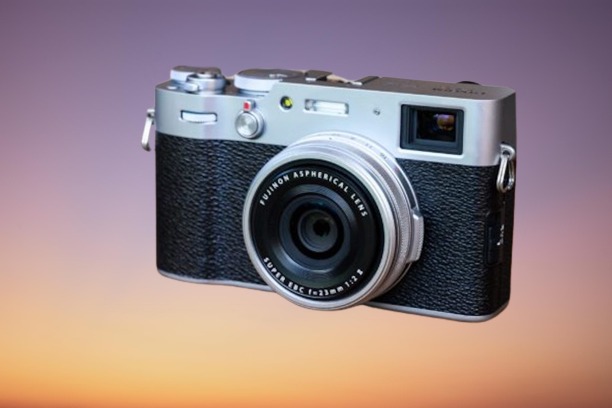
- 26.1MP APS-C X-Trans CMOS 4 sensor23mm F2.0 lens (35mm equivalent)Hybrid Viewfinder (OVF&EVF)3-inch, 1.62-million-dot, two-way tilting touchscreen4K video at 30fps
- Compatible with legacy conversion lenses
The Fujifilm X100V isn’t just a stylish camera; its 26MP APS-C X-Trans CMOS sensor produces superb pictures, and a revised lens design enhances macro performance. The 23mm f/2.0 primary lens on the front of the camera provides a 35mm equivalent (in 35mm terms).
Additionally, you’ll discover Fujifilm’s newest Film Simulation modes, which offer a variety of black and white film options, including ACROS, as well as the choice to add a film-like grain effect to images, which is excellent for those gritty black and white street photos.
A hybrid optical/electrical viewfinder is available that combines the best features of both worlds to give you the feel of a rangefinder camera. When shooting “from the hip,” or from awkward angles, the touchscreen on the back of the device tilts to help.
The camera can shoot 4K video at 30 frames per second if that’s what you’re interested in, however some people may find the lack of image stabilisation to be a deal-breaker. A stunning small camera, the X100V is as enjoyable to look at as it is to use for photography. Due to how lightweight and portable it is and how well it captures the world, it has a unique quality that encourages you to go out and take pictures.
Best pocket camera: Ricoh GR IIIx
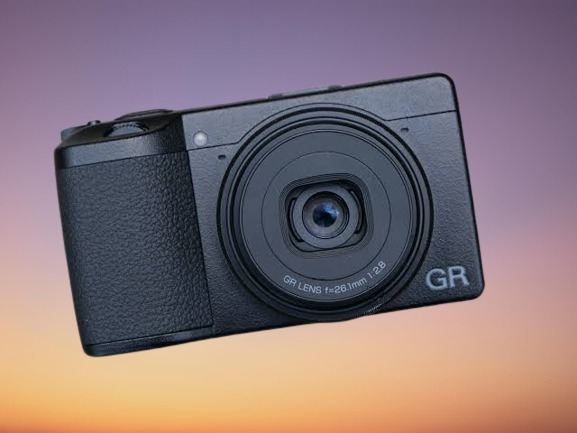
The Ricoh GR IIIx is a popular compact among street photographers
- 24.2MP APS-C CMOS sensor
- 26.1mm f/2.8 (40mm equivalent) lens100-102,400 ISO range
- 3-inch, 1.04m-dot, fixed touchscreen
- Full HD video
Similar to the Fujifilm X100V, the Ricoh GR IIIx sports an APS-C CMOS Sensor, which is impressive given how small the camera is. It has a 26.1mm f/2.8 lens, which is similar to 40mm (in 35mm terms), and the camera has a unique ‘Snap’ focus technology so you can swiftly take images without any delay from focusing, making it another excellent street camera.
On the back, there is a 3-inch touch screen, and two command dials make it simpler to swiftly alter settings. The GR IIIx has excellent handling. It starts up in less than one second, responds quickly to shutter releases, is easy to use with one hand, and has simple controls.
With a great balance of both, the Ricoh GR IIIx is a well-positioned niche option to smartphones and large cameras. There’s enough in it to persuade smartphone users to think about buying a “real” camera, as well as seasoned photographers who desire a “proper” camera in their pocket. But above all, it must produce fantastic image quality in any kind of lighting. and the GR IIIx accomplishes this with the help of a 24MP APS-C sensor, DNG raw capture, and a sharp 40mm f/2.8 lens.
Best waterproof camera: Olympus Tough TG-6

- 12MP image sensor
- 4x optical zoom lens; 25-100mm (35mm equivalent)
- Waterproof down to 15m, shockproof, crushproof, freezeproof
- 4K video
- 16 scene modes
The Olympus Tough TG-6, the sixth iteration of the premium waterproof camera, is the result of Olympus’ long history of producing rugged, waterproof, small cameras.
It has been improved with regard to strength, image quality, and video recording throughout time. There are also a number of accessories for this camera that can enhance the functionality of the close-up flash or provide additional protection for the camera.
In comparison to entry-level waterproof cameras, the camera has a 12MP sensor and an f/2.0 lens, which provides it an advantage and will aid with the low light situations you find underwater. You can take detailed close-up pictures using the camera’s remarkable level of macro performance since folded optics were employed in the lens’ manufacture.
There is a 4K video recording feature. The built-in focus stacking will impress macro photography enthusiasts, and there are some manual options available for while you’re shooting.
Read Also: Best video Camera for Hunting Filming
Best compact Camera for low light: Panasonic Lumix LX100 II

- 17MP Four Thirds MOS sensor
- 24-75mm equivalent lens, f/1.7-2.8
- 3-inch, 1.28M dot touchscreen
- ISO range: 200-25,600 (standard), ISO 100 (extended)
- Continuous shooting: 11fps max (5.5fps with AF-C)
- 4K video
With a brilliant f/1.7-2.8 zoom lens and optical image stabilisation, the Panasonic Lumix LX100 II features a multi-aspect ratio sensor based on a Four Thirds sensor, making it a camera that can function well in low-light photography circumstances.
Despite having a 3-inch touchscreen, it does not tilt. A high-resolution electronic viewfinder (EVF) with 2.76 million dots is also included.
A plethora of external dials and switches make the metal-bodied camera a terrific tactile device to use, allowing you to change settings even when the camera is turned off.
With a premium camera, you would expect to be able to record 4K video. Additionally, the camera has built-in Wi-Fi so you can transfer images to your smartphone and operate it remotely. The Panasonic Lumix LX100 II is still an extremely versatile and portable travel companion even if it was released back in 2018.
We hope that was helpful to you in selecting your new compact camera.
If you don’t know what lense is suitable for you please visit bestoflens.com
Best compact camera for beginners
Best small digital camera
Best compact camera for travel
Fujifilm compact camera
Best compact camera with viewfinder
Best budget compact camera
